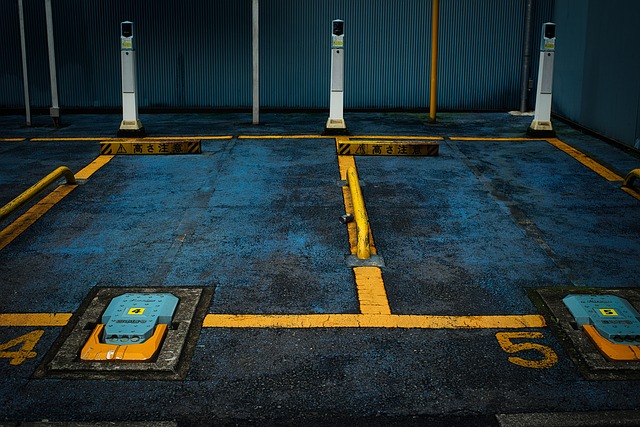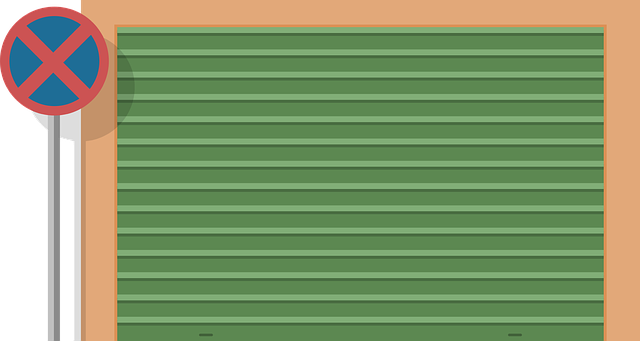In Tucson, where the climate fluctuates from intense heat to milder weather, optimizing energy efficiency in homes is crucial for comfort and cost savings. Upgrading your Tucson Garage Doors with high-quality insulation, particularly polyurethane foam with a high R-value, is essential to combat these extremes. Homeowners should focus on ensuring their garage doors are well-insulated and airtight to prevent energy loss through seams and joints. Additionally, regular maintenance and checks for any compromised areas in the frame or siding are necessary to maintain the integrity of the insulation. By choosing the right insulation materials and considering professional assistance from Tucson Garage Doors experts, residents can achieve significant reductions in utility bills while also contributing to a more sustainable environment. Regularly inspecting and maintaining your garage door's insulation will help sustain its energy-efficient performance over time, making it a wise long-term investment for Tucson homeowners.
homeowners in Tucson can significantly enhance their homes’ energy efficiency by focusing on garage door insulation. This article delves into the transformative impact of proper insulation for Tucson Garage Doors, guiding readers through the essentials of assessing current insulation levels, followed by a detailed installation guide tailored to Tucson’s unique climate. By understanding the importance of insulation and employing the provided tips and best practices, residents can lock in energy savings and bolster their homes’ performance year-round.
- Understanding the Importance of Insulation in Tucson Garage Doors for Energy Efficiency
- Assessing Your Current Garage Door Insulation Needs in Tucson's Climate
- Step-by-Step Guide to Installing Insulation in Tucson Garage Doors
- Maximizing Energy Savings: Tips and Best Practices for Insulating Your Tucson Garage Door
Understanding the Importance of Insulation in Tucson Garage Doors for Energy Efficiency

In the climate-diverse city of Tucson, optimizing energy efficiency in every aspect of home maintenance is crucial for comfort and cost savings. Tucson Garage Doors play a pivotal role in this regard, as they represent a significant portion of a home’s exterior surface area. Insulating these doors is not just about comfort; it’s a strategic move to enhance the thermal performance of your garage and adjacent rooms. Quality insulation within Tucson Garage Doors can drastically reduce heat transfer, keeping the interior cool during the sweltering summers and warm in the mild winters. This energy efficiency is not only beneficial for personal comfort but also leads to substantial savings on utility bills. The high-desert location of Tucson means that homes must be well-insulated to maintain a stable indoor temperature, and Tucsson Garage Doors are no exception. Selecting the right type and thickness of insulation material, such as polystyrene or polyurethane foam, is essential for achieving optimal energy efficiency. Homeowners in Tucson should consider the R-value—a measure of resistance to heat flow—when selecting their garage door insulation. Higher R-values correspond to better insulating properties, which is particularly important in a region with extreme temperature variations like Tucson. By investing in well-insulated Tucson Garage Doors, homeowners can significantly reduce their carbon footprint and contribute to the sustainability of their living environment. It’s an investment that pays off in both immediate cost savings and long-term environmental responsibility.
Assessing Your Current Garage Door Insulation Needs in Tucson's Climate

Residents in Tucson, Arizona, are no strangers to extreme weather conditions, with scorching summers and mild winters. The high temperatures can render a poorly insulated garage door ineffective, leading to significant energy loss and increased utility costs. To ensure your garage remains a comfortable and energy-efficient space, it’s crucial to assess your current garage door insulation needs, taking Tucson’s climate into account. Begin by examining your existing garage door for signs of wear or compromised seals, which can impact its ability to retain heat or keep the cool air inside during the hotter months. If your garage door is older than ten years, it may be time for an upgrade. Modern Tucson Garage Doors come with enhanced insulation options, including single, double, and triple-layer insulated doors that provide a higher R-value, which measures thermal resistance. This means better insulation to keep the interior temperature regulated regardless of the exterior conditions.
Evaluate your garage’s usage pattern; if it’s used for storage or as an additional living space, proper insulation is even more critical. Consider the types of materials your door is made from and the existing insulation level. For instance, steel doors with polyurethane insulation can be a cost-effective solution that offers excellent R-values to handle Tucson’s climate effectively. Additionally, ensure that weather stripping and threshold seals are intact, as these components play a significant role in maintaining the integrity of your garage door’s insulation. By thoroughly assessing your current insulation needs and considering upgrades with well-insulated Tucson Garage Doors, you can significantly improve your home’s energy efficiency and create a more comfortable environment for years to come.
Step-by-Step Guide to Installing Insulation in Tucson Garage Doors

To enhance energy efficiency in Tucson’s often extreme climate, proper insulation of garage doors is crucial. This step-by-step guide will walk you through the process of installing insulation in your Tucson garage doors to keep your home comfortable and reduce heating and cooling costs.
Begin by measuring your garage door for the appropriate amount of insulation needed. Most Tucson homes benefit from an R-value between 13 and 18, depending on how extreme the temperatures get. Once you have the correct measurement, remove the existing weather stripping or sealant around the garage door’s perimeter to prepare for installation. Next, clean the surface where the insulation will be applied, ensuring it is dry and free of debris.
There are several types of insulation suitable for Tucson Garage Doors, including foam board, fiberglass batts, or reflective barriers. For foam board, apply a bead of construction adhesive along the top and sides of the garage door frame where the panels meet. Carefully unroll the foam board, pressing it into place to eliminate any gaps. For fiberglass batts, wear protective clothing as the fibers can irritate skin and lungs. Cut the batts to fit snugly between the garage door panels, stuffing them into all cavities. If opting for a reflective barrier, unfurl it behind the garage door in the attic space, ensuring it covers all areas where heat transfer is likely to occur.
In the case of sectional doors, you may also need to remove and reinstall the panels after insulating, or consider purchasing insulated garage door panels if your current doors are not already insulated. For roll-up doors, check the manufacturer’s guidelines for specific instructions on how to add insulation without compromising the door’s functionality.
After installation, seal all edges and seams with a high-quality sealant to prevent air leakage. This will further enhance the energy efficiency of your Tucson Garage Doors. Always follow safety precautions when working with insulation materials, and if you’re unsure about any step in the process, it may be best to consult a professional. Properly insulated garage doors can significantly contribute to the overall energy efficiency of your home in Tucson’s varied weather conditions.
Maximizing Energy Savings: Tips and Best Practices for Insulating Your Tucson Garage Door

In Tucson’s varied climate, where extreme heat and occasional cooler spells are common, insulating your garage door can significantly enhance your home’s overall energy efficiency. To maximize energy savings, consider the type of material used for insulation. High-performance insulation like polyurethane foam provides an excellent R-value, which measures thermal resistance, and is ideal for Tucson’s conditions. When installing or upgrading insulation, ensure that all seams and joints are properly sealed to prevent air leaks—a common source of energy loss. Additionally, inspect the garage door’s frame and siding for any gaps or cracks that require caulking or weatherstripping to maintain temperature control within your home. Reflective insulation materials can be added on the inside to complement the existing insulation, reflecting heat back into the living space during cooler months and keeping it out during hotter ones.
Furthermore, the installation process should prioritize precision and attention to detail. For Tucson homeowners opting for DIY insulation upgrades, carefully follow manufacturer guidelines. It’s crucial to measure correctly and cut the insulation material to fit snugly without compromising the garage door’s movement or functionality. If professional assistance is sought, choose contractors with expertise in Tucson Garage Doors who understand the unique demands of the local climate. They can provide tailored solutions that ensure optimal energy savings while maintaining the integrity and aesthetics of your garage door. Regular maintenance post-installation, including checking for insulation degradation or damage over time, will also contribute to sustained energy efficiency. With these tips and best practices in mind, Tucson residents can effectively insulate their garage doors, leading to noticeable improvements in home energy savings year-round.
In conclusion, enhancing your garage door insulation with Tucson Garage Doors is a practical and effective measure to improve energy efficiency and reduce heating and cooling costs. By evaluating your current insulation and following the step-by-step guide provided, homeowners in Tucson can ensure their garages are well-insulated. The tips and best practices for insulating your garage door will not only provide comfort but also contribute to environmental sustainability. With the right approach, Tucson residents can transform their garages into more energy-efficient spaces, making a significant difference in their annual energy consumption. Implement these insights today for a comfortable and cost-saving tomorrow.
